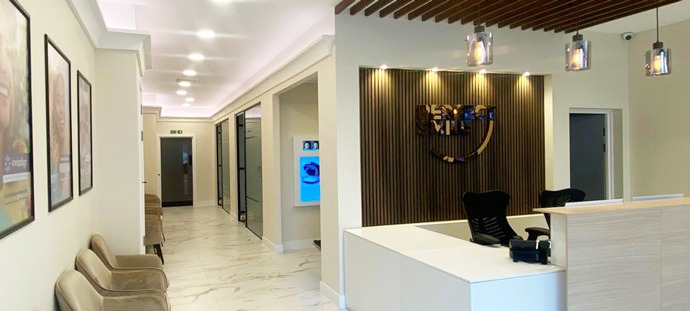In the world of healthcare and clinical operations, maintaining impeccable hygiene standards isn’t just best practice, it’s mandatory. With rising expectations from regulatory bodies and increased patient awareness, the design of decontamination spaces within dental and medical environments has never been more crucial. Yet, many clinics continue to overlook the direct relationship between layout and contamination control.One of the most effective spatial strategies to mitigate cross-contamination is the implementation of unidirectional layouts.
By directing the flow of instruments, equipment, and personnel in a single, logical direction from contaminated to sterile clinics can significantly enhance both hygiene and efficiency. This article explores how unidirectional layouts optimise decontamination workflows and what design elements support this structure.
Understanding the Decontamination Workflow
Before diving into the specifics of layout, it’s important to understand the stages of a typical decontamination process. Most clinical environments, especially dental practices, follow a multi-step process to ensure all instruments are safely cleaned and sterilised.
Key Zones in a Decontamination Process:
| Zone | Function |
| Dirty/Receiving Zone | Collection
of used instruments and contaminated items |
| Cleaning Zone | Manual scrubbing or use of ultrasonic cleaners to remove visible debris |
| Disinfection Zone | Thermal or chemical disinfection of instruments |
| Sterilisation Zone | Autoclaving or advanced sterilisation equipment |
| Clean/Storage Zone | Safe storage of sterile items for reuse |
When zones and directional flow aren’t clearly established, the likelihood of recontamination rises, putting patient safety at risk and potentially violating regulatory standards.
What Is a Unidirectional Layout?
A unidirectional layout is a strategic design that promotes a one-way flow of processes, materials, and staff from dirty to clean areas without crossover. This approach ensures that once items or personnel leave a contaminated zone, they do not return to it.
In the context of decontamination room design unidirectional flow is especially critical. It provides a physical and procedural pathway that maintains the separation between contaminated and sterile zones.

Benefits at a Glance:
- Reduces potential for cross-contamination
- Supports regulatory compliance
- Enhances workflow and clarity
- Facilitates staff training and operations
Whether applied in hospitals, laboratories or dental clinics, this model serves as the backbone for safe, efficient hygiene practices.
Why Unidirectional Layouts Work: The Key Benefits
The true power of unidirectional layouts lies in their simplicity. When paired with thoughtful dental practice design, this approach creates a cleaner, more efficient and more compliant clinical environment.
1. Enhanced Infection Control
In environments where biological material is handled daily, infection control must be airtight. A unidirectional layout ensures that:
- Contaminated tools never re-enter clean zones
- Clean and dirty workflows never intersect
- Staff can adhere to hygiene protocols more intuitively
This greatly minimises the risk of pathogens being transferred between different stages of instrument handling.
2. Improved Workflow Efficiency
One of the main frustrations in poorly designed clinics is workflow congestion. Staff often double back to retrieve or move items, leading to inefficiencies and delays. A unidirectional layout eliminates unnecessary backtracking, creating a smooth operational rhythm.
In well-planned dental practice design, tasks flow linearly, which:
- Reduces staff fatigue
- Speeds up turnaround times
- Lowers risk of human error
3. Regulatory Compliance
Governing bodies like the CQC and HTM 01-05 lay out strict guidelines for instrument decontamination. Many of these standards are based on principles of zoning and directional workflow. A unidirectional system is a key feature that helps clinics pass inspections and maintain certifications.
It also makes audits and training easier, as processes are consistent, repeatable, and easily understood.
4. Space Optimisation
While it might sound like this layout requires more room, it can actually save space with strategic planning. Especially in smaller practices, designing zones along a continuous flow can minimise spatial conflicts and clutter.
Through smart decontamination room design, you can integrate pass-through washers, segregated storage units, and sliding doors that align with the forward flow of tasks making even compact rooms functionally effective.
How to Implement a Unidirectional Layout in Practice
Transitioning to a unidirectional layout requires more than simply rearranging furniture. It’s a comprehensive design strategy that integrates practicality, compliance, and ease of use for staff.
Essential Design Features:
- Clear Zoning: Use partitions, cabinetry, or colour-coded flooring to demarcate dirty, clean, and sterile areas.
- Touch-free Features: Pedal-operated doors, sensor-activated taps, and no-touch bins help minimise the risk of cross-contamination through contact.
- Pass-Through Equipment: Autoclaves or cabinets that open from both sides allow seamless movement from one zone to another.
- Logical Storage Systems: Position sterile storage at the end of the flow to prevent unnecessary back-and-forth.
Common Pitfalls to Avoid:
- Overlapping clean and dirty zones
- Insufficient signage or unclear boundaries
- Failing to consider staff circulation in the design
- Inadequate ventilation and lighting in different zones
Practical Implementation: A Dental Clinic Example
Take the example of a busy dental clinic in an urban setting that recently underwent a refurbishment. The team had been struggling with disorganised workflows and repeated compliance concerns. A closer look revealed that their sterilisation area had a U-shaped setup, forcing staff to double back frequently and compromising overall efficiency.
- Cleaning, sterilisation, and packaging stations were aligned in a straight sequence
- Pass-through autoclaves were installed to maintain flow
- Wall signage and coloured flooring were introduced to clearly separate each zone
In just a few weeks, the clinic reported:
- Faster processing of instruments
- Fewer procedural mistakes by staff
- Positive feedback from compliance inspections
This transformation in their decontamination room design not only elevated hygiene standards but also improved day-to-day staff productivity and morale.

When to Consider a Unidirectional Layout
If you’re unsure whether your clinic could benefit from a unidirectional layout, consider the following signs:
Look out for:
- Staff crossing paths between clean and dirty tasks
- Difficulty keeping zones visually and physically separated
- Bottlenecks around sterilisation equipment
- Non-compliance warnings from health authorities
A professional interior design consultant with experience in dental practice design can assess your current layout and recommend solutions tailored to your space and budget.
Conclusion
The design of decontamination spaces should never be an afterthought. In environments where hygiene is paramount, the flow of tools, materials, and people must be strategically managed. A unidirectional layout is more than a design trend, it’s a foundational principle that promotes safety, efficiency, and regulatory compliance.
At Divo Interiors LTD, we understand the critical role design plays in infection control. Whether you’re refurbishing a single sterilisation room or planning an entire clinical layout, our expertise in spatial planning ensures your practice meets the highest standards of functionality and hygiene.









